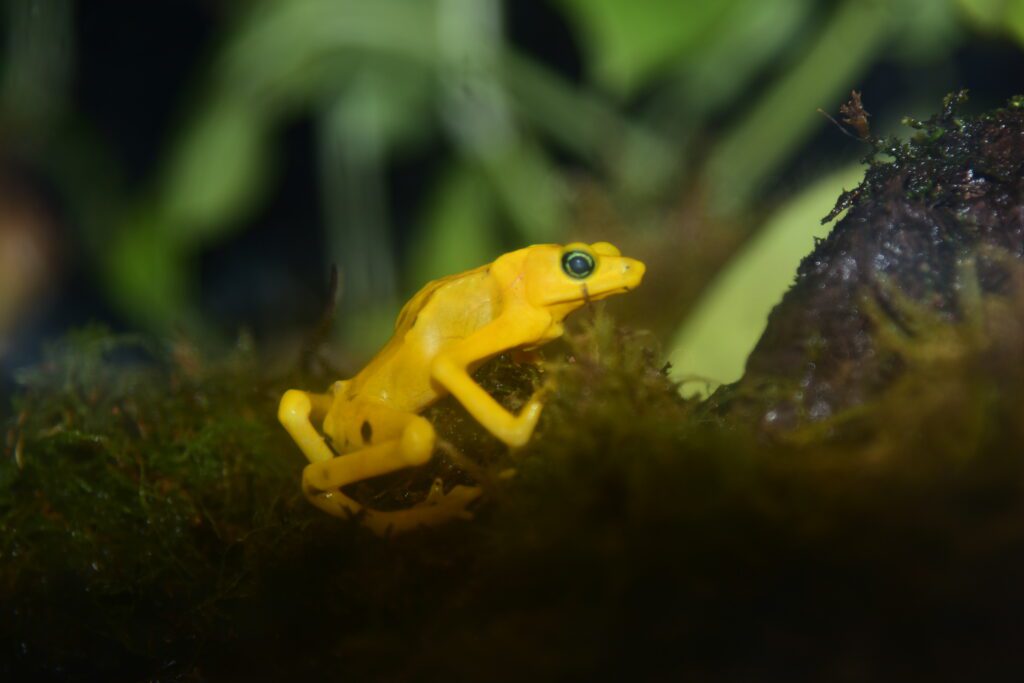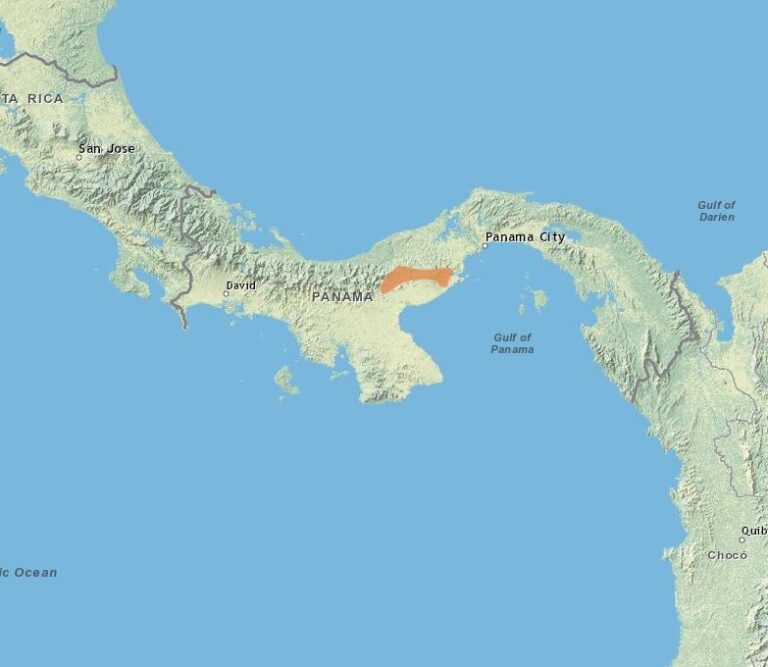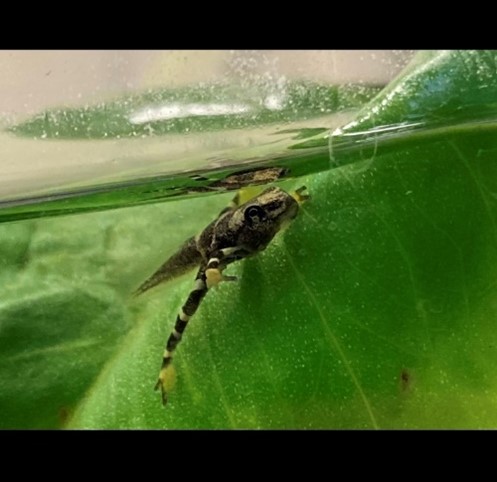
In the lush cloud forests of Panama, a small, bright-yellow amphibian once danced along riverbanks and stream beds—a symbol of biodiversity, cultural pride, and ecological health. Today, the Panamanian golden frog (Atelopus zeteki) is considered functionally extinct in the wild, its numbers decimated by habitat loss and the deadly chytrid fungus. But thanks to committed international partnerships, including the critical work being done by Seneca Park Zoo in Rochester, NY, hope for this striking species lives on.
A Frog On the Brink
The Panamanian golden frog isn’t just Panama’s national animal—it’s a cultural icon, appearing in folklore, festivals, and even currency. But like many amphibians around the world, it has fallen victim to Batrachochytrium dendrobatidis, a fast-spreading fungal disease that has wiped out dozens of species and devastated populations across Central and South America.
Recognizing the urgency of the crisis, conservationists acted quickly to establish captive assurance colonies—safe breeding populations in protected environments where golden frogs could survive and, eventually, help restore wild populations.
A Global Partnership: SPZ & EVACC
Seneca Park Zoo has played a key role in that effort, forming a deep and lasting partnership with the El Valle Amphibian Conservation Center (EVACC) in Panama. EVACC is one of the most advanced amphibian conservation facilities in the world and a critical lifeline for Panama’s disappearing amphibians, including the golden frog.
Through its “Coins for Conservation” program and other fundraising initiatives, Seneca Park Zoo supports EVACC’s work on the ground—funding habitat restoration, research, and care for golden frog breeding colonies. Zoo staff also collaborate with EVACC scientists, sharing knowledge and resources to improve husbandry practices and advance scientific understanding of chytrid resistance and amphibian resilience.


Conservation in Action at Seneca Park Zoo


At home in Rochester, Seneca Park Zoo’s conservation programming, education efforts, and guest experiences all help bring attention to the plight of the Panamanian golden frog—and to the larger global amphibian crisis. The Zoo maintains its own breeding population of golden frogs as part of an AZA Species Survival Plan (SSP), ensuring genetic diversity and long-term species viability.
Visitors can learn about golden frogs through interactive exhibits, keeper chats, and special events like Golden Frog Day, held each August. These experiences don’t just raise awareness—they also inspire real action, connecting guests with the idea that conservation isn’t just happening “somewhere else”—it’s a shared global responsibility.
Why Amphibians Matter
Amphibians like the Panamanian golden frog are vital to the health of ecosystems. They help control insect populations, serve as prey for other animals, and act as environmental indicators—warning us when ecosystems are in trouble. Saving them means preserving the balance of entire habitats.
Seneca Park Zoo’s work, both in Rochester and in collaboration with international partners like EVACC, is a model of modern conservation—science-based, globally minded, and rooted in education and community engagement.
How You Can Help
- Visit the Zoo and support programs that protect endangered species.
- Donate to conservation funds like Coins for Conservation.
- Celebrate Golden Frog Day (August 16–17, 2025!).
- Reduce pesticide use and support local amphibian habitats.
- Share the story of the Panamanian golden frog and why it matters.
Together, we can make sure the Panamanian golden frog’s story doesn’t end in extinction—but in survival and hope.







